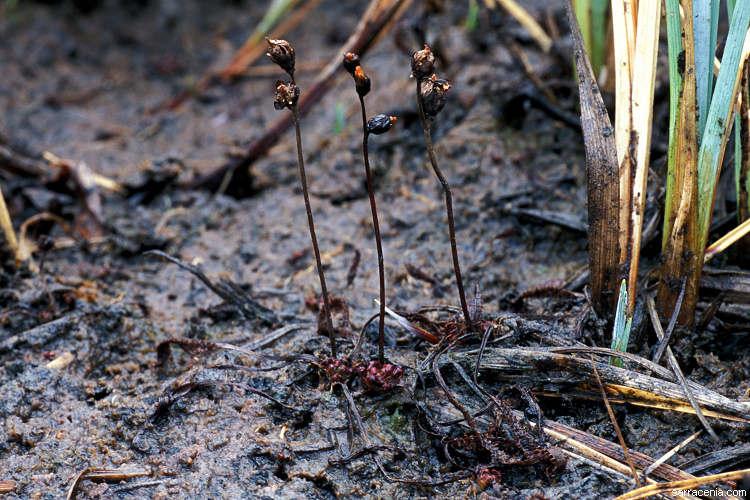
Some research:
Fruit were common, and even though winter was approaching they were still filled with seed.
This site is classified as a "Research Natural Area" and D. linearis is considered
a species of special concern in Montana, so I was very gratified when in preparation for this trip I was given permission to
collect plant material from the site for research purposes. I was permitted to collect several dead leaves from the
plants (which I detached carefully, so as to avoid causing damage to the hibernacula), and also one complete fruit.
I had noted in my collection request that I would follow a 1-in-20 collecting procedure, so in order to collect a single fruit Beth and
I first had to verify the existence of at least twenty fruit in the fen. This was harder than you might think, since it was late in
the season and many of the fruit had decayed. Also, to make sure we were not tricked by D. anglica,
we required that to be counted, a fruiting plant had to have dead leaves that were sufficiently intact so
that we could be confident it was
D. linearis. After we finally found our twenty fruit, I collected one for
subsequent study. (Incidentally, we never did see D. anglica at the site, but have seen photographs
from the site that look like they might that species.)
Snow started to fall,
which we took as a cue to finish our work.
Beth and I carefully packed the seeds and leaves in our gear, and then danced about to warm our
feet and hands. The winter chill was finally sinking in and our core temperatures were dropping. We changed out of our
wet socks, which meant exposing our terrified naked feet to the cold, cold air. Then we danced some more to warm up
again.
The hike back was uneventful, although
our suspense levels rose when we passed the site where we had the bear encounter.